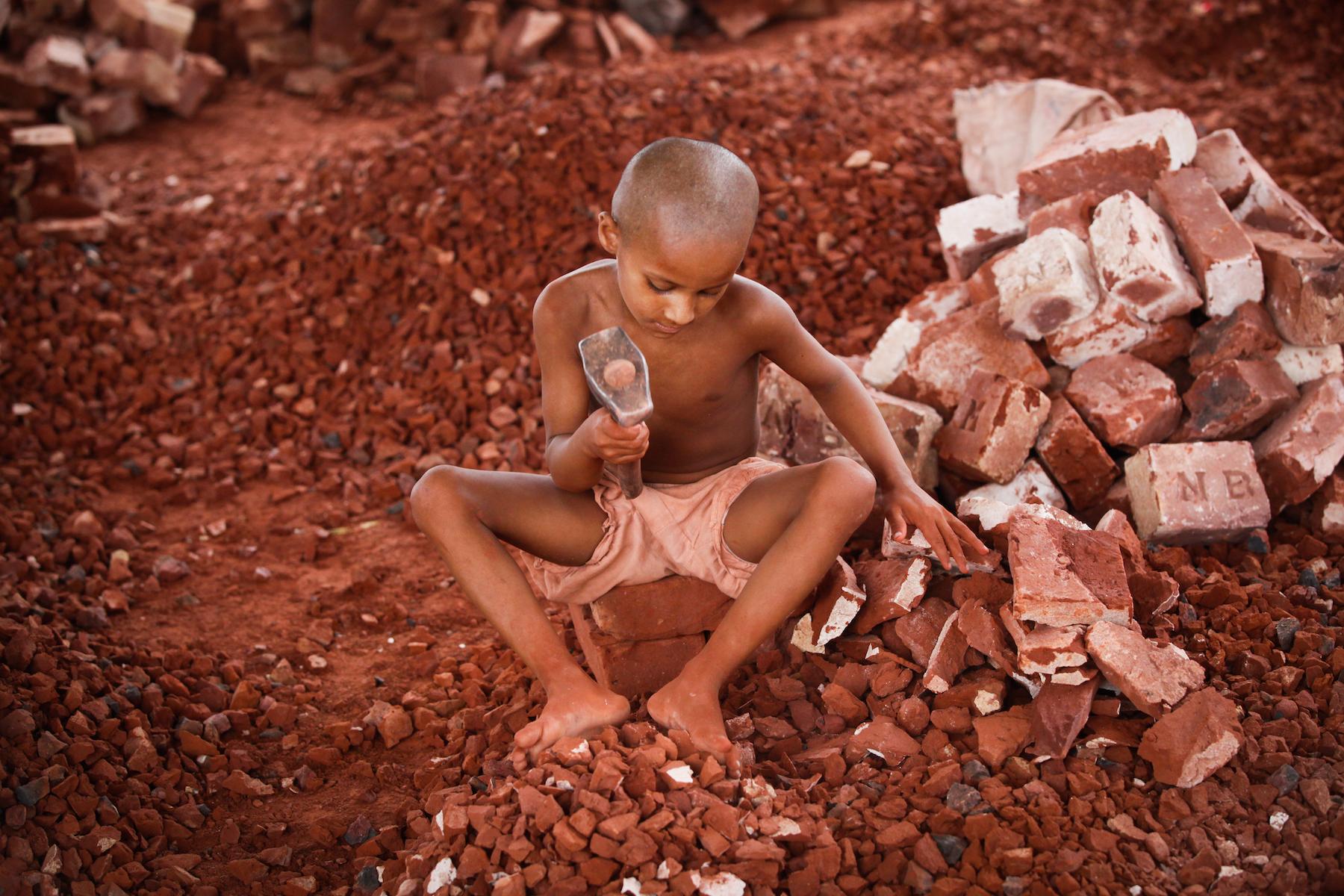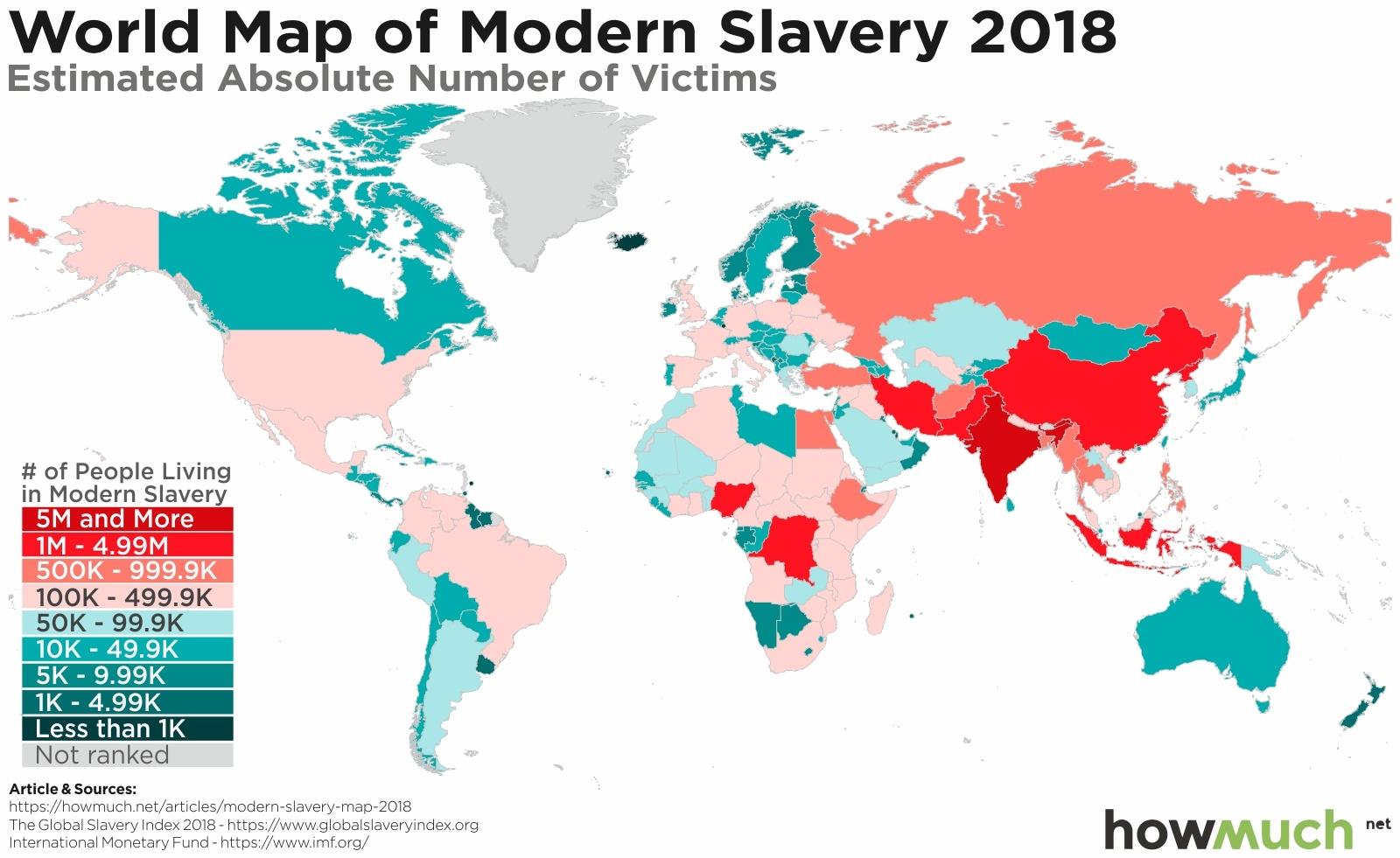I was shocked recently by reading an article that pointed out that there are more people enslaved today than at any other time in history. It’s kind of counter-intuitive, isn’t it? We think “Well, we got that licked; Wilberforce, Abraham Lincoln, emancipation and all that… Yes, there may be one or two bad spots in the world—but those are just the exception.”
But it seems not.
Don’t be misled by thinking of slavery in terms of leg irons, shackles and transatlantic ships, such images are deeply ingrained from the past. But there is a modern, slick version of slavery and it walks abroad freely in our society.
Experts have calculated that while roughly 13 million people were captured and sold as slaves between the 15th and 19th centuries; today, an estimated 40.3 million people – more than three times the figure during the transatlantic slave trade – are living in some form of modern slavery, according to the latest figures published by the UN’s International Labour Organization (ILO) and the Walk Free Foundation.
[Of course the figures of the past ignore the numbers of children born of slaves, and not captured into slavery].
Women and girls comprise 71% of all modern slavery victims. No surprise there. Children make up 25% and account for 10 million of all the slaves worldwide.

Do you care? Well, you might care, if that means paying much more for your digital tablet or sneakers! The majority of people, it seems, would rather save money at the cost of having slaves work for them. Because that’s what you are doing, when you buy goods from those major international cartels which enforce slavery.
And when I say they “enforce” slavery, I mean they knowingly sell goods made by slaves, and would rather argue their way round the issue (like Apple, Nike, Samsung, H&M, Amazon and Victoria’s Secret) than do something effective to put an end to it.
While I think of it, I worked a couple of stints as a doctor in Saudi Arabia back in the 1970s. I was horrified when the translator told me the rich women patients often referred to their maids as “the slave”. Typically this meant a young Philipino girl. Her passport was confiscated on arrival and, for some, they never got it back. Effectively that meant she was owned or controlled for life because you can’t legally exit Saudi Arabia without a passport or exit visa.
So, yes, I’ve been a doctor to slaves! Woa!
Prove that there aren’t slaves in your supply chain, UK government demands…
The UK has tried to work on a bill to bring these criminal and corrupt corporations into line. The Modern Slavery Act was heralded as ground-breaking. But—guess what?—it has achieved nothing much. Given the dire and garbled language of the Act, it’s not surprising.
But Britain has a minister on the case (sorta): Karen Bradley, UK Minister for Modern Slavery and Organised Crime, said: “Greater transparency will give customers, campaigners and shareholders the information they need to hold all big business to account while also supporting companies to do the right thing.”
It matters not which country to work from, exploitation is definitely on the rise. You probably think that’s sexual exploitation; we hear a lot about that. But I was surprised to learn that work exploitation has far surpassed forced prostitution for numbers.
Cases of labour exploitation overtook that of sexual exploitation, according to a report published by the Salvation Army. The report highlighted a 62% increase in human trafficking victims seeking support with more than 1,800 people coming forward since 2011. Forced labour accounted for 42% of cases last year, surpassing sexual exploitation (38%) and domestic servitude (10%).
The campaigning group Free The Slaves estimate that around 21-30 million people worldwide are trapped in slavery. This is compared to an estimate of 9-11 million people who landed alive in Europe from Africa during the slave trade.

Slavery today looks different to how it did back in the slave trade. But it operates on the same principle: forced labor for no pay. People kept against their will, trafficked and given no money.
Sometimes they are ‘paid’ in food, so they can stay alive and work harder.
A ‘Dressed to Kill’ white paper includes a quote from Kevin Burke, President and CEO, American Apparel & Footwear Association (AAFA):
“It is more important than ever for brands and retailers to know exactly where the product is at any given time and what materials are being used to create the product. Being able to trace the supply chain is a top priority for the industry.”
Modern slavery is all around us, often hidden in plain sight. People can become enslaved making goods, serving our food, picking our crops, working in factories, or working in houses as cooks, cleaners or nannies. Victims of modern slavery might face violence or threats, be forced into inescapable debt, or have their passport taken away and face being threatened with deportation.
Many people have fallen into this trap because they were trying to escape poverty or insecurity, improve their lives and support their families. Now, they can’t leave. Migrant workers are particularly vulnerable to forced labor.
And yes, good old COVID has made everything far worse, pushing more people into dire economic circumstances and forcing many more people to desperate solutions to take care of their family.
IT IS A MEDICAL PROBLEM, ONE WAY OR ANOTHER.
Types of slavery today
Rant over. So let me finish by explaining many forms of “slavery” that you might not recognize as such:
Modern slavery takes many forms. The most common are:
Human Trafficking. The use of violence, threats or coercion to transport, recruit or harbor people in order to exploit them for purposes such as forced prostitution, labor, criminality, marriage or—most grotesque and cruel of all—organ removal (there is BIG money in organ transplants).
Forced Labor. Any work or services people are forced to do against their will, usually under threat of punishment.
Debt Bondage/Bondage Labor. The world’s most widespread form of slavery. People trapped in poverty borrow money and are forced to work to pay off the debt, losing control over both their employment conditions and the debt
Inherited Slave Status. (where people are born into slavery). A very old form of slavery, where people are treated as property, and their “slave” status has been passed down the maternal line.
Child Slavery. When a child is exploited for someone else’s gain. This can include child trafficking, child soldiers, child marriage and child domestic slavery
Forced Marriage. When someone is married against their will and cannot leave. Most child marriages can be considered slavery
Domestic Servitude. Domestic work and domestic servitude are not always slavery, and when properly regulated can be an important source of income for many people. However, when someone is working in another person’s home, they may be particularly vulnerable to abuses, exploitation, and slavery, as they might be hidden from sight and lack legal protection.
So why am I writing this to you all? Have I turned Woke or political? Not at all. This is straight from my doctor hat. Our world is sick in many ways—not just slavery rearing its ugly head—but that means we are all living with a social disease, a cancer that won’t go away until we cut it out.
Already it’s clear that the executives of Apple, Victoria’s Secret, Nike and Amazon condone slavery but insist it is called something else, to ease their conscience.
The bottom line is that these people are not properly protected by laws. Businessmen and women will go on exploiting individuals for profit who can’t defend themselves, unless jailed or made to stop.
It’s as simple as that…
Prof. Keith Scott-Mumby
The Official Alternative Doctor
Sources:




